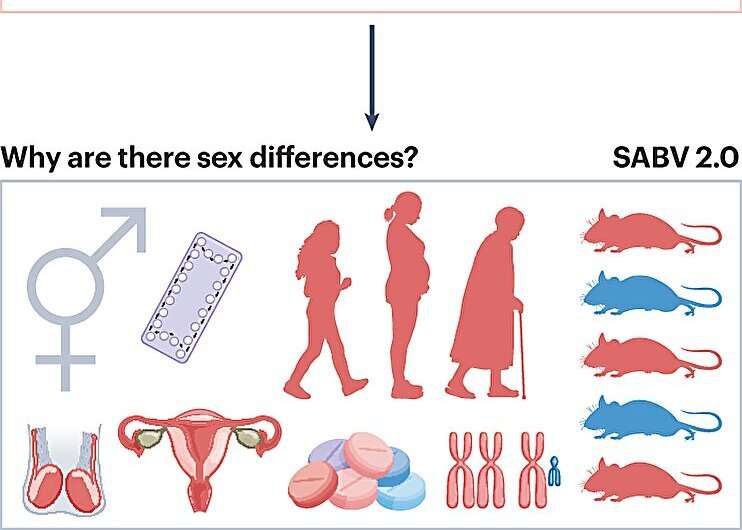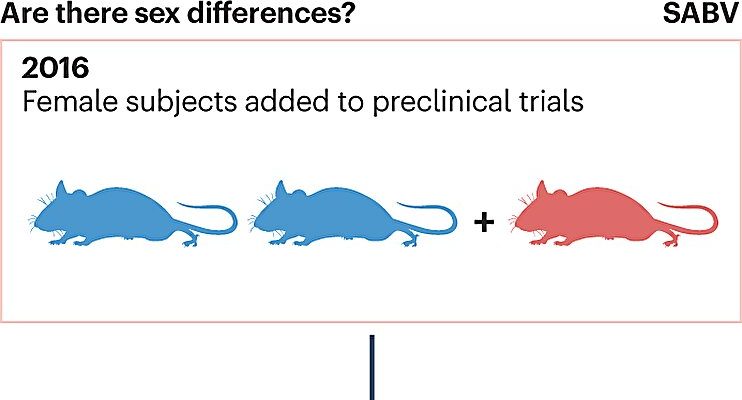
In 2016, recognizing that lack of research in female animals was hampering the success of treatments for mood disorders, the National Institutes of Health (NIH) changed its policy for basic research to include sex as a biological variable for basic research, a move that triggered an explosion of research into sex differences.
“Building a strong unbiased foundation of literature will help uncover more effective and sex-specific biomarkers for depression onset and target better treatment,” said Georgia Hodes, assistant professor in the School of Neuroscience, part of the Virginia Tech College of Science.
Hodes and co-author Dawson Kropp, a Ph.D. student in neuroscience, reviewed some notable findings since the NIH mandate in an article recently published in the journal Nature Mental Health.
The following are among them:
- Compared to men, women have twice the risk of developing depression and anxiety disorders, experience their first episode of depression earlier, and have more cumulative episodes over their lifespan.
- Men are potentially underdiagnosed with major depressive disorder (MDD) because of sex differences in symptoms and they are more likely to externalize their symptoms, demonstrate anger or violence, and experience comorbid drug- or alcohol-use disorder.
- Various cell types in the brain have baseline and stress-induced sex differences. For example, microglia, the immune cells of the central nervous system, express baseline differences in men and women across development and in adulthood, which may contribute to sex differences across psychiatric disorders.
- Men seem to have greater vulnerability to prenatal or early-life stress exposure, resulting in stress-associated changes in physiology and behavior during the juvenile period. Changes in female behavior may not manifest until after puberty.
- Some tests with mice show that chronic variable stress—recurrent physical, psychological, and social stress that is unpredictable and unavoidable—can produce behavioral responses in women after only six days. A minimum of 21 days is needed to produce the same behavioral responses for those tests in men.
In addition to discussing the research, the article also addresses the need for pharmaceutical companies to recognize that depression is a heterogeneous disorder and that one pill will not fit all.
In fact, Hodes noted, the issue of women being under researched first garnered public attention when eight out of 10 drugs pulled off the market by the Food and Drug Administration from 1997-2001 were found to pose greater risks of adverse effects to women than to men.
“At a time when other fields of medicine are moving into individualized treatments, taking sex into account should be a no brainer when it comes to mental health,” Hodes said.
Hodes and Kropp propose that future studies go beyond whether there are sex differences—the question researchers have focused on since 2016—and start asking why there are sex differences and how these differences can help with developing personalized therapeutics.
The authors also address the need to include transgender and intersex populations in studies to better understand how they cluster with the population at large. This research would include investigating how long-term hormonal contraceptive use or hormonal treatments taken by transgender individuals impact mental and physical health.
“If we only use cisgender populations in our clinical studies, we are repeating the same mistakes made by past researchers who included only men,” said Hodes.
More information:
Georgia E. Hodes et al, Sex as a biological variable in stress and mood disorder research, Nature Mental Health (2023). DOI: 10.1038/s44220-023-00083-3
Journal information:
Nature Mental Health
Source: Read Full Article
